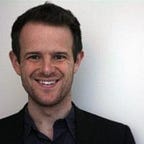What would a paid version of Facebook look like?
“there will always be a version of Facebook that is free”
With that simple, and now repeated, use of the word “version”, Zuckerberg has me (and many others) eyeing a future with a paid version of Facebook. Not a new idea, Biz Stone was buzzing about it in 2013.
It’s an attractive prospect.
Rather than the commoditisation and exploitation of our attention, we’d could pay for a service optimised to increase our connections with other people. Perhaps a service designed to make us happier and more connected to others, rather than the current form which is found to make us feel depressed and unhappy.
It’s so attractive a prospect, that I thought I’d spend some time and energy wildly speculating how it could work.
Cost
Facebook brought in $40.7 billion last year off a 2 billion user base. To offer a paid service Facebook would need to paid service, the subscription cost would need to offset the lost advertising revenue from those users that opt-into the paid version, as well as cover the costs of the additional resources it would take to build a version of the platform optimised for paid users.
The baseline of $20 per-user lost advertising revenue is quite low, since Facebook makes $9 per-user monthly in the US. Certain users are far more valuable for Facebook — the greater your disposable income and the more likely you are to be influenced by advertising, the better you are for them in their current business model. Let us assume that people who would opt for a paid service would largely be drawn from this pool of higher-value users. So while more than half of people say they’d pay more than that $9 per-month, the price might have to be higher still to make up for the higher value users opting out of ads.
Given the additional costs around changing business models, it likely means we’d be looking at a $12 to $15 per-month fee for US users of the platform.
Getting people to convert to a premium service like this, especially after more than a decade of free use, will be challenging. Still, if the company is to be true to mission about connecting people, giving people a service focused on revue from making connections rather than revenue from ads would seem like a natural choice. And as more people see the personal value of those enhanced connections, perhaps we’d all start making the switch.
User Experience
In our hearts, we all know the Facebook Newsfeed is not optimised for creating the most meaningful interactions nor giving us the most important information. It’s designed to keep us scrolling.
Like a slot machine, it does this by creating a seemingly random reward pattern. Since we don’t know exactly how or when we’ll be rewarded, we keep scrolling and thus Facebook keeps hauling in ad revenue.
To give a snapshot of what I’m talking about, I scrolled past the first 20-odd posts that appeared on my newsfeed, and ranked them based on how interesting they are to me, with 10 being interesting and 0 being uninteresting.
If Facebook were to offer a paid service, I would hope this is one of the first things to change. Rather than focusing on keeping us scrolling, the feed could be optimised to serve up the good and relevant stuff first, and reward us for deep engagement in that content.
This is because the news feed is optimised for paying customers: advertisers. If it were optimised for the paying customer of the Facebook user, it could be a whole other social experience, less akin to playing a social slot machine and more like walking into a favourite pub and finding it full of your mates.
Imagine how much better that would make you feel.
They could also start building tools focused on deepening social experience.
An example:
After spending time with a group of friends we all email or WhatsApp photos to each other. We relive and share the experience. So private sharing with a group who has shared an experience is the default user behaviour (at least for me and most people I interact with).
Facebook already knows where we are and who we are with. But right now, Facebook ask us to post photos publicly. They need the content to populate the news feed and keep us scrolling.
If it were a platform optimised for social interaction, it would seek to match how people want to behave and add further value to that behaviour. In a paid version of Facebook, there could be a simple method for quickly sharing photos with the people you were with and we’d all have a little shared photo library specific to the group who was actually there.
To be sure there are many other problems with Facebook. It’s still the number one platform for propagandists looking to influence foreign elections, spreading false information, and pushing people into political silos. Hopefully everyone at Facebook finds that deeply upsetting.
However, creating a paid service, optimised not for ads but for value to user could start to address some of the issues around user mental health and happiness.
